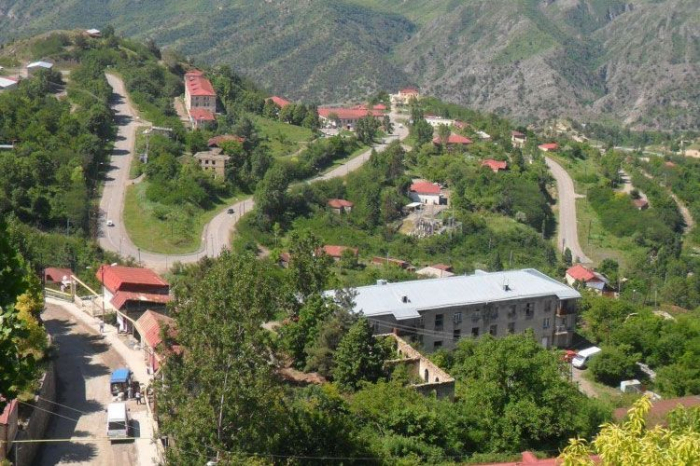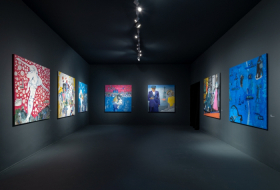Lachin is an area with a rich historical past. The monuments of Lachin are among the most valuable and unique monuments comparable to Azikh cave in Khojavend district and Taghlar cave in Jabrayil district, which date back to the I-II millennium BC.
Before the occupation, the art of weaving developed in Lachin. It is not accidental that the creation of the carpet known in the world as "Gasimushagi" is connected with the name of this region.
The region is rich with about 300 historical, cultural and architectural monuments, dozens of mounds, castle-type monuments, a large number of tombstones, horse and ram figures, as well as many natural resources, and valuable mineral waters.
Most of the monuments in this area are monuments belonging to the Caucasian Albanian period. According to the scientists, most of the monuments of the Caucasian Albanian period in the area date back to the pre-Christian era.
The complex terrain and harsh climate of these places have led to the construction of bridges at many river crossings and impassable sections of roads. They are mainly single-arch or double-arch bridges.

Lachin district. Two-arch bridge over Minkend river. XV century
During the occupation of Lachin dsitrict by the Armenian armed forces, most of the historical, cultural and religious monuments in the region were destroyed. The following monuments in the district make up only 70% of the memorials in the district.
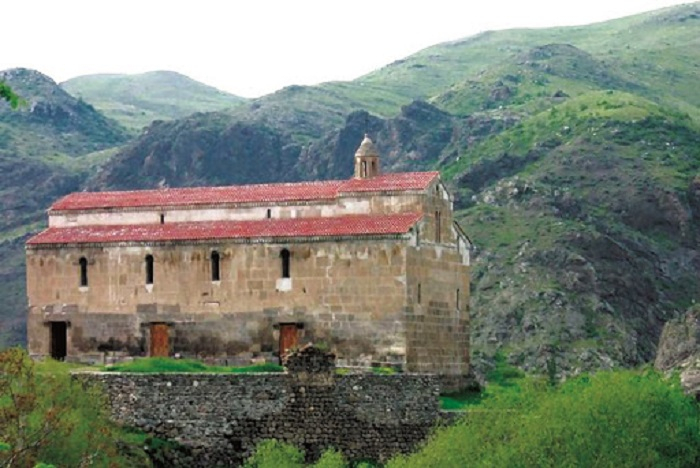
Aghoghlan temple is set in two acres of land at the 30th kilometer of Lachin-Minkend highway, on the right bank of the river Hekeri, near Kosalar village. Aghoghlan Temple is Albanian monastery built in the 5th-6th centuries. As the monument was exposed to avalanches and destructions at different times, it was rebuilt in the style of church and adapted to monastery. The first foundation of the monument was preserved in its initial form during repairs; the new walls were built over the old ones. After restoration, Aghoghlan temple had become one of the most spectacular monuments of the Albanian period architecture of the Azerbaijani history. The temple is 25 meters long and 12.5 meters wide. Two rows of the square-shaped eight bearing piles – pylons divided the inner side of the building into three parts.
The monument was under occupation since May 18, 1992. Armenians made illegal changes in architectural style and the interior of Aghoghlan monastery, completely wiped out the inscriptions on the walls of the monument, as well as a large number of ornaments and symbols reflecting the Albanian period or greatly changed them. In 2006, under the pretext of repairing the monument for the second time, the Armenians placed in different parts of the walls 26 boards with inscriptions indicating belongingness of the monument to the Armenian Apostolic Church. 2 tombstones were erected in the right side of the courtyard and 2 stone crosses made of red basalt stone from Irevan were erected in front of the entrance door by Armenians.
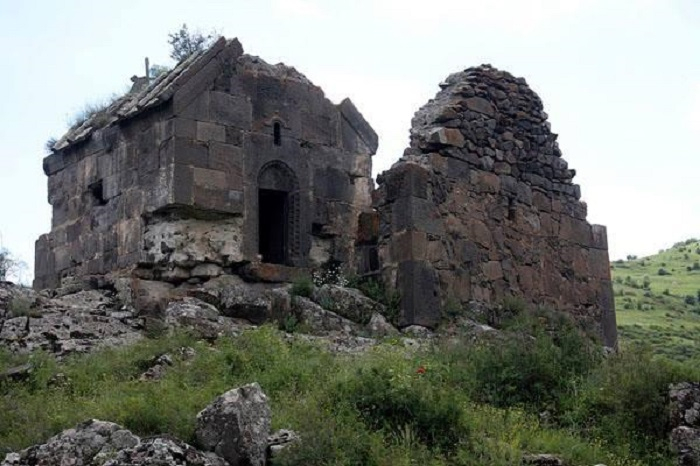
Damirovlu Pir Temple is an ancient Albanian temple located in Gargishlag village of Azerbaijan’s Lachin district. The temple belongs to the material and cultural heritage of Caucasian Albania. Researchers date the temple to the 11th century. The temple was built in a mountainous area. The reason for this was to protect the temple from outside influences at a time when Islam was already spreading. A large Albanian cross is engraved on the entrance door of the temple.
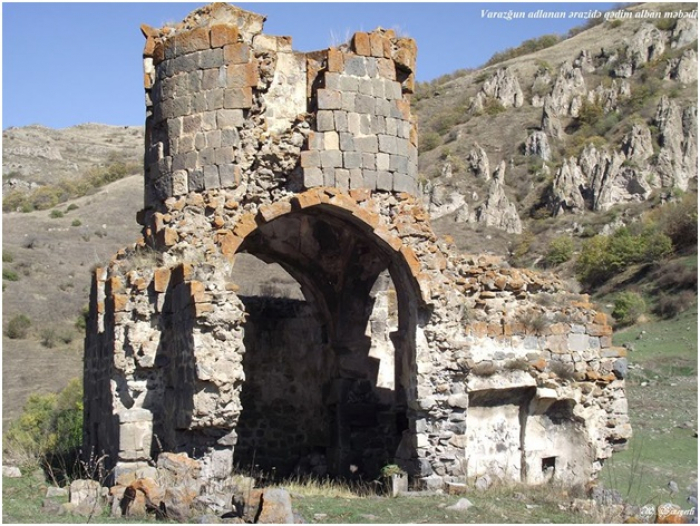
Varazgun Temple is an ancient Albanian temple located in the Lachin region of Azerbaijan, which was constructed in the II-V centuries during the Caucasian Albania and left in ruins in our time. This ancient Albanian temple was built in a rectangular shape and in a high mountainous area. The dome and south wall of the temple collapsed.
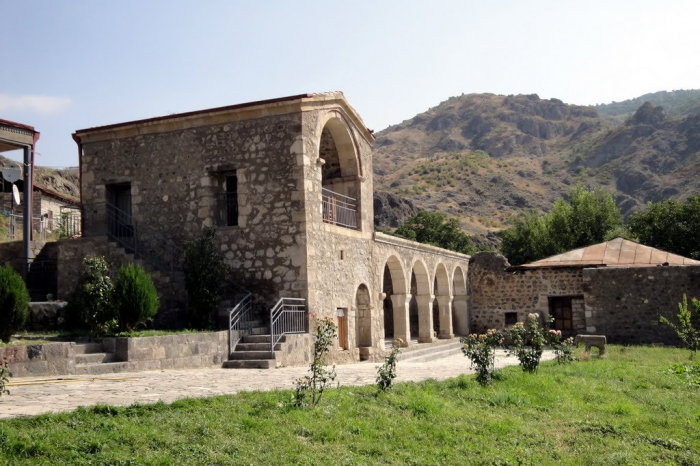
Hamza Soltan Palace is situated in Husulu village of Lachin district. The Hamza Soltan Palace is supposed to be built in 1761. From the general view of the palace it becomes clear that, the castle had a tall tower. There was an entrance door in the corner of the south side of the castle. The two-storeyed palace has beautiful arched ceilings fastened to the thick side walls. The palace also has a large hall, a number of auxiliary rooms and a court-house. Delicately embellished door and windows of the palace are made of the walnut wood.
Eastern architectural traditions were widely used in the building of the palace. Most probably the sultanate was established here in 1700 and governed a large part of Zangezur region. The palace building was constructed of local stone and construction lime.
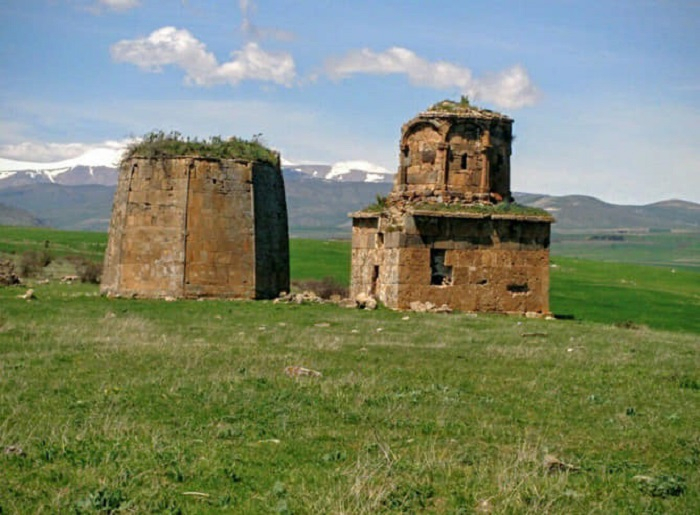
Jijimli Village Tombs rise close within a shrine near Jijimli village. Malik Ajdar Tomb, traditionally considered the oldest one, is circular inside and octagonal outside.
The right-angle opening of the tomb, the front door is in the northern side. The top of the door frame is covered with a pointed-beam-like architrave stone. Inside its edge, remains of a rider’s hewn picture are observed. A number of the site’s details are the same as those of tombs in Damirchilar village of Gubadli region. There are no construction inscriptions and carved surfaces on the tombs. The researchers supposedly date the Jijimli tomb from the 12th-13th centuries.
The late 13th century, in the reign of Elkhanids, seems more convincing as the construction time.
Popularly called the “Deaf Dome”, the other Jijimli tomb is cruciform inside and square outside. It is supposed to have been constructed in the 17th century.

Fortress Mirik is located on the top of the mountain on the west side of the village, at the southern end of the mountain range that extends to the north. Although the date of construction of the tower has not been determined yet, the use of cyclopean masonry in the construction of the tower shows it dates back to very ancient times. The tower is 200-250 meters long and 30-50 meters wide.
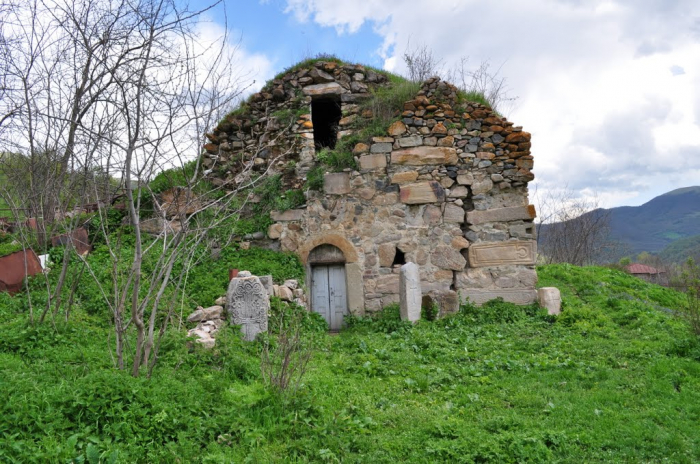
Shalva temple is one of the 15th century Albanian temples of Shalva village in Lachin region. The building is made of local basalt stones and limestone.

Lachin History and Ethnography Museum functioned from 1974 to May, 1992. The museum was rich with the exhibits of high artistic and historical significance.
The museum building was considered as a historical and culture monument. Total area of museum was over 1200 sq. meters. The museum consisted of 24 rooms, 1 exhibition hall and a museum collection of 72 sq. meters. Plastic works of art, carvings, statues of horse and ram and very many household items made in different centuries were exhibited in the courtyard of museum. From 1983 to 1992, large-scale expositions were held in museum.
More than 5 thousand exhibits were collected in the main fund of museum. A total of about 10 thousand items existed in the museum. Lachin History and Ethnography Museum was a contest winner of the All-Union competition of museums held in 1989. The museum exhibits could not be salvaged during the occupation of Lachin region by the Armenian Armed Forces in May, 1992.
The museum complex was completely destroyed and razed to the ground by Armenian vandals.

Memorial Museum of Sari Ashiq
In 1988, the memorial museum of the bayati (a kind of Azerbaijani poem created by people) master Sari Ashiq lived in the 12th century, was opened in Gulabird village of Lachin region. At that time, a total of 150 items reminiscent of Sari Ashiq were handed over to the museum. The monument of Sari Ashiq was erected there.
As a result of the occupation of Lachin region by the Armenian Armed Forces in 1992, the museum building and nearly 200 exhibits were destroyed and plundered.

Garasaggal temple
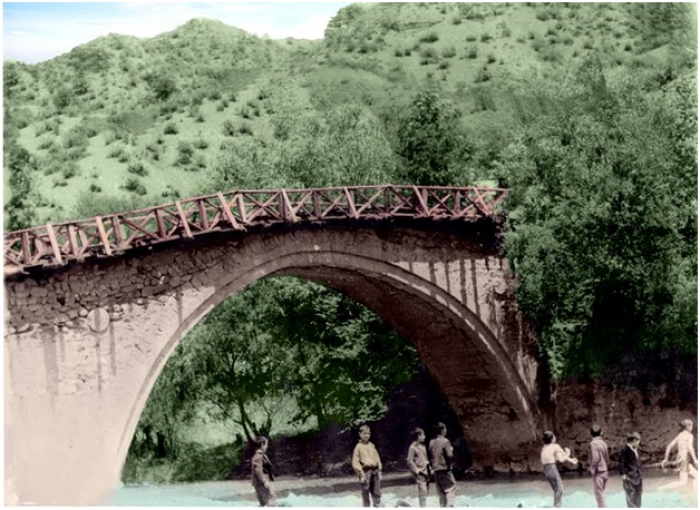
Bridge in Pirjahan village
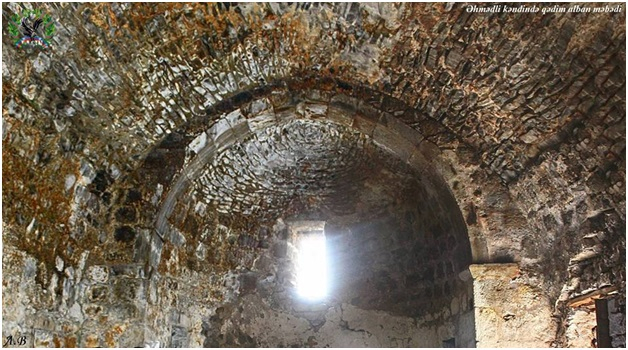
Ancient Albanian temple in Ahmadli village
More about:








